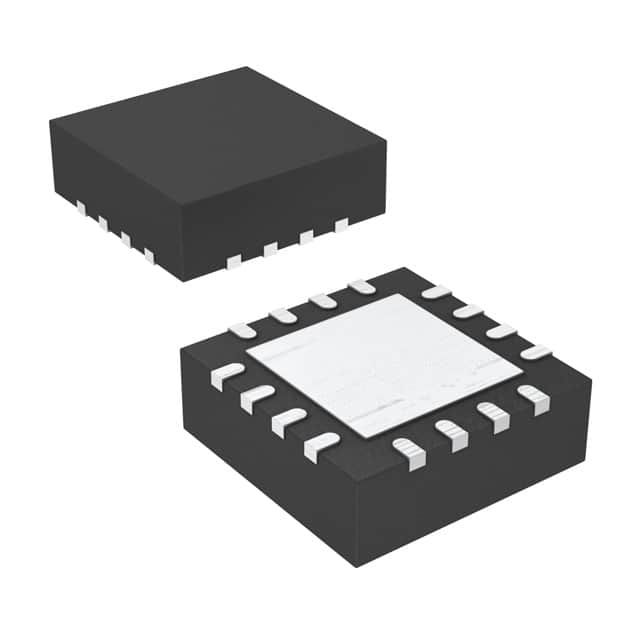Xem thông số kỹ thuật để biết chi tiết sản phẩm.

ADS8329IBRSAT
Product Overview
Category
The ADS8329IBRSAT belongs to the category of analog-to-digital converters (ADCs).
Use
This product is used to convert analog signals into digital data for processing in various applications.
Characteristics
- High-resolution: The ADS8329IBRSAT offers a resolution of up to 16 bits, ensuring accurate conversion of analog signals.
- Low power consumption: It operates at low power levels, making it suitable for battery-powered devices.
- Fast conversion rate: With a maximum sampling rate of 1 MSPS (mega samples per second), it can quickly convert analog signals into digital form.
- Wide input voltage range: The ADC can handle input voltages ranging from 0V to VREF, providing flexibility in signal acquisition.
- Integrated reference voltage: It includes an internal reference voltage source, eliminating the need for an external reference.
Package and Quantity
The ADS8329IBRSAT is available in a small outline integrated circuit (SOIC) package. It is typically sold in reels containing a specified quantity of units.
Specifications
- Resolution: Up to 16 bits
- Sampling Rate: Up to 1 MSPS
- Input Voltage Range: 0V to VREF
- Reference Voltage: Internal
- Package Type: SOIC
Pin Configuration
The ADS8329IBRSAT has a total of 20 pins. The pin configuration is as follows:
- VREF-
- VREF+
- AGND
- REFOUT
- REFIN
- DVDD
- DGND
- D15
- D14
- D13
- D12
- D11
- D10
- D9
- D8
- D7
- D6
- D5
- D4
- D3
Functional Features
- Differential Inputs: The ADC supports differential input signals, allowing for accurate measurement of the voltage difference between two points.
- Serial Interface: It features a serial interface (SPI) for easy communication with microcontrollers or other digital devices.
- Programmable Gain Amplifier: The ADS8329IBRSAT includes a programmable gain amplifier, enabling signal amplification before conversion.
- Power Management: It offers various power management modes to optimize energy consumption.
Advantages and Disadvantages
Advantages
- High resolution ensures precise analog-to-digital conversion.
- Low power consumption makes it suitable for portable and battery-powered applications.
- Fast conversion rate allows for real-time data acquisition.
- Integrated reference voltage simplifies circuit design.
Disadvantages
- Limited input voltage range may not be suitable for high-voltage applications.
- Requires external components for proper operation.
- Higher cost compared to lower-resolution ADCs.
Working Principles
The ADS8329IBRSAT operates based on the successive approximation register (SAR) architecture. It samples the analog input voltage, compares it to a reference voltage, and generates a digital output representing the input value.
Application Field Plans
The ADS8329IBRSAT finds applications in various fields, including: 1. Industrial automation: Used for monitoring and control systems in manufacturing processes. 2. Medical devices: Enables accurate measurement and analysis of physiological signals. 3. Data acquisition systems: Converts analog sensor signals into digital form for further processing. 4. Instrumentation: Provides precise measurement capabilities in scientific instruments. 5. Automotive electronics: Used in vehicle diagnostics and control systems.
Alternative Models
For those seeking alternative options, the following models can be considered: - ADS8320: 12-bit resolution ADC with similar features. - ADS8330: 18-bit resolution ADC with higher precision. - ADS8319: 14-bit resolution ADC with lower cost.
In conclusion, the ADS8329IBRSAT is a high-resolution analog-to-digital converter with fast conversion rate and low power consumption. It finds applications in various fields, offering precise measurement capabilities. However, it has some limitations such as a limited input voltage range and the need for external components. Alternative models with different resolutions are available to suit specific requirements.
Liệt kê 10 câu hỏi và câu trả lời thường gặp liên quan đến ứng dụng ADS8329IBRSAT trong giải pháp kỹ thuật
Sure! Here are 10 common questions and answers related to the application of ADS8329IBRSAT in technical solutions:
Q: What is the ADS8329IBRSAT? A: The ADS8329IBRSAT is a 16-bit analog-to-digital converter (ADC) manufactured by Texas Instruments.
Q: What is the resolution of the ADS8329IBRSAT? A: The ADS8329IBRSAT has a resolution of 16 bits, which means it can represent digital values from 0 to 65535.
Q: What is the maximum sampling rate of the ADS8329IBRSAT? A: The ADS8329IBRSAT has a maximum sampling rate of 500 kilosamples per second (ksps).
Q: What is the input voltage range of the ADS8329IBRSAT? A: The ADS8329IBRSAT has a differential input voltage range of ±VREF, where VREF is the reference voltage supplied to the ADC.
Q: Can the ADS8329IBRSAT operate with a single-ended input? A: No, the ADS8329IBRSAT only supports differential inputs.
Q: What is the power supply voltage range for the ADS8329IBRSAT? A: The ADS8329IBRSAT operates with a power supply voltage range of 2.7V to 5.5V.
Q: Does the ADS8329IBRSAT have an integrated voltage reference? A: No, the ADS8329IBRSAT requires an external voltage reference for accurate conversions.
Q: What is the interface used to communicate with the ADS8329IBRSAT? A: The ADS8329IBRSAT uses a serial peripheral interface (SPI) for communication with the microcontroller or host device.
Q: Can the ADS8329IBRSAT be used in industrial applications? A: Yes, the ADS8329IBRSAT is suitable for various industrial applications such as process control, data acquisition, and instrumentation.
Q: Are there evaluation boards available for the ADS8329IBRSAT? A: Yes, Texas Instruments provides evaluation boards and software to help users evaluate and develop applications using the ADS8329IBRSAT.
Please note that these answers are general and may vary depending on specific application requirements and datasheet specifications.

